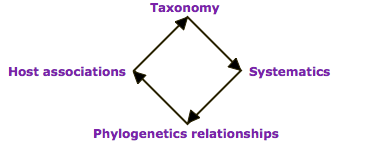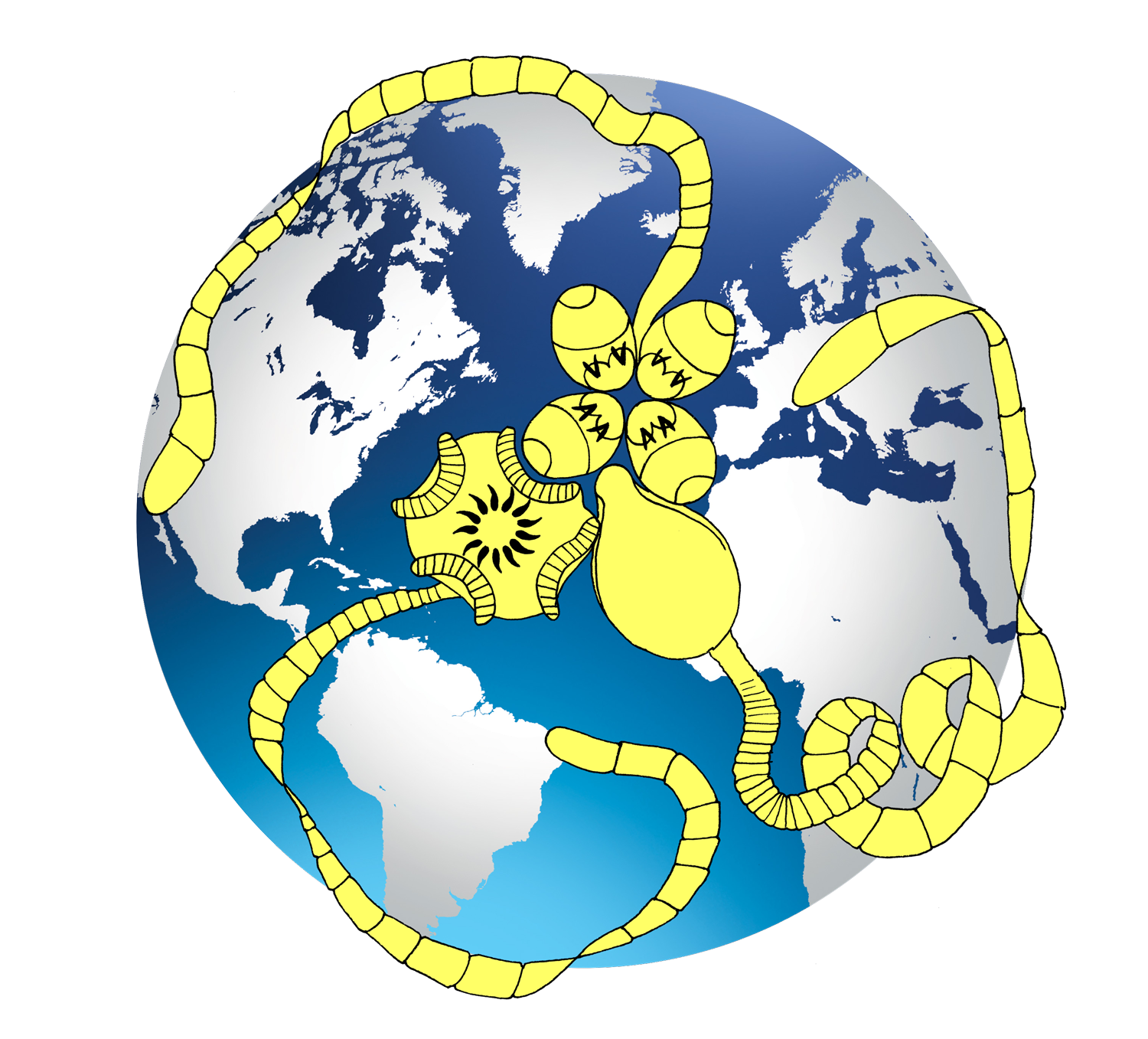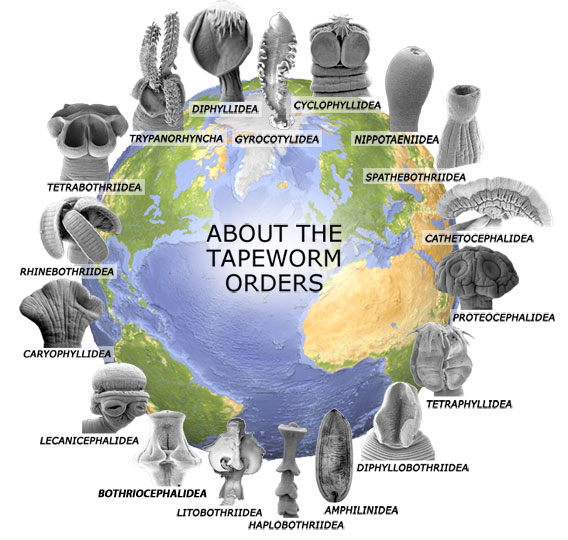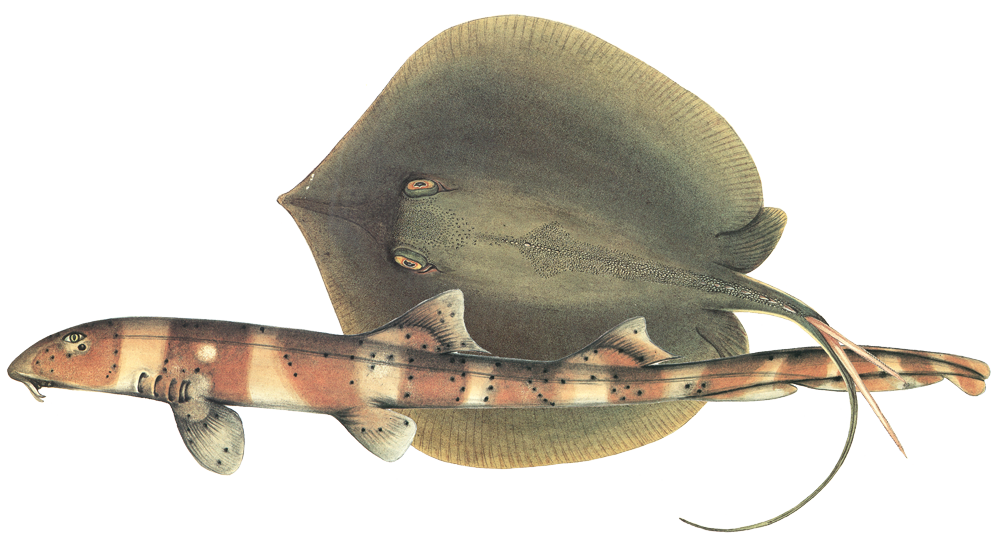
The world’s 1,200+ species of sharks, skates and rays (elasmobranchs) host more than half of the 21 orders of tapeworms (Cestoda) now recognized. Our lab focuses on four interrelated aspects of the biology of this host/parasite system:

● Taxonomy: To date, we have described ~150 new species and over 20 new genera of elasmobranch tapeworms from new collections from more than 20 countries globally (see Tapeworm PBI). The relatively large number of elasmobranchs that remain to be examined for cestodes, in combination with the high degree of host specificity of most groups of elasmobranch tapeworms, suggest that hundreds of new taxa remain to be described. While specimens of many are already in hand, we estimate that ~40% of the world’s elasmobranch species remain to be formally examined for tapeworms. Our goal is to explore as many of these as possible.
● Systematics: With collaborators, we have worked to revise the ordinal-level classification of elasmobranch tapeworms to maintain a monophyletic framework. To this end, we have erected three new cestode orders (Rhinebothriidea, Phyllobothriidea, Onchoproteocephalidea) and have revised diphyllidean genera. We are currently working to dissolve and reconfigure the speciose, but clearly polyphyletic, Tetraphyllidea. One of our goals is to establish a family-level classification for all elasmobranch-hosted taxa. The Global Cestode DB provides on-line open access to cestode taxonomy and classification.
● Phylogenetic relationships: It is now clear that elasmobranch tapeworms comprise the backbone of the overall phylogeny of cestodes for essentially all orders of terrestrial and freshwater tapeworms have, as their closest relatives, one or more groups of elasmobranch tapeworms. With collaborators we have worked to generate robust molecular phylogenies for many of the major cestode lineages (e.g., Diphyllidea, Trypanorhyncha, “Tetraphyllidea”). As material fixed appropriately for molecular work becomes available through new collections we are striving to construct phylogenies for all major taxa and more speciose genera.
● Host associations: The accuracy of host identifications has become an increasingly important issue. Our global survey work has helped reveal a substantial number of new species of sharks, skates and stingrays. To assure accurate host identifications we now routinely collect a tissue sample for ID verification with NADH2 gene data and a series of photos of each host specimen examined (see Elasmobranch DB). Among the metazoan groups that parasitize elasmobranchs, cestodes are by far the most prevalent and diverse. The high degree of host specificity seen in most makes them useful as indicators of elasmobranch biology. We are currently working to explore the puzzling fact that, despite their high degree of host specificity, comparison of host and cestode phylogenies, reveals little cophylogenetic signal!
 Tapeworm PBI
Tapeworm PBI Global Cestode Database (GCD)
Global Cestode Database (GCD) Elasmobranch DB
Elasmobranch DB